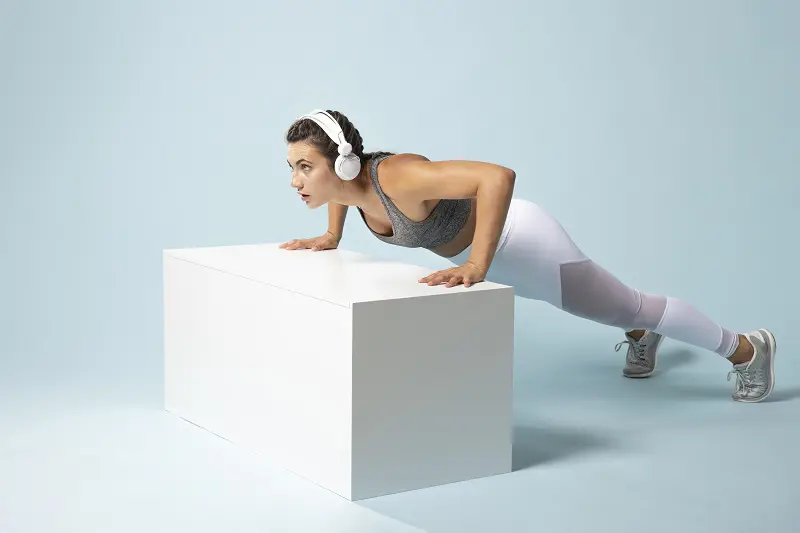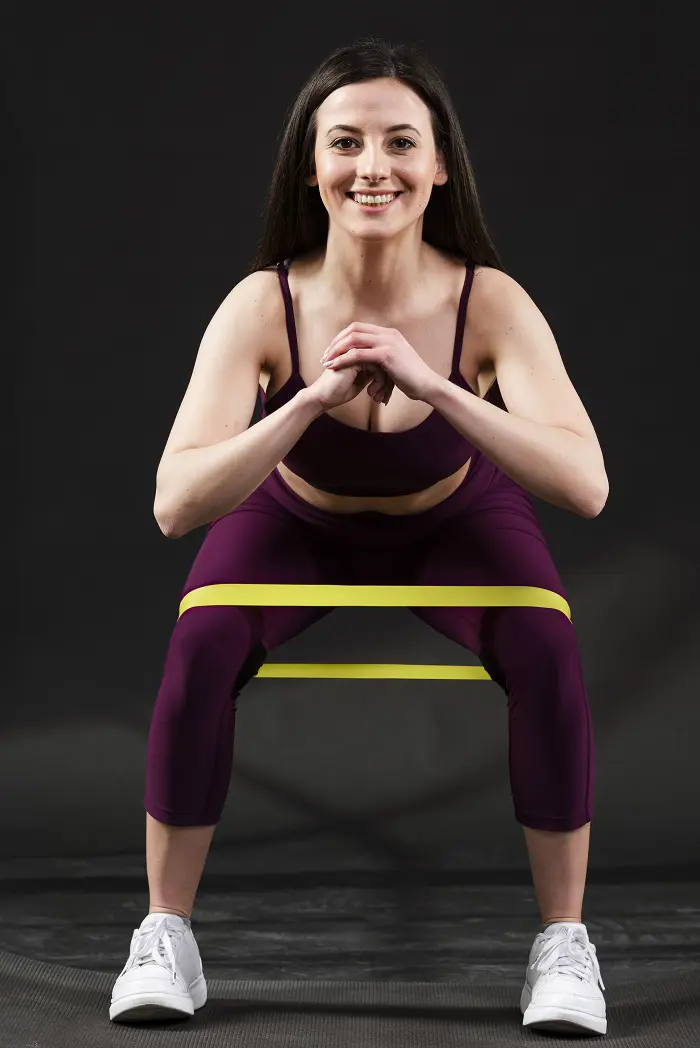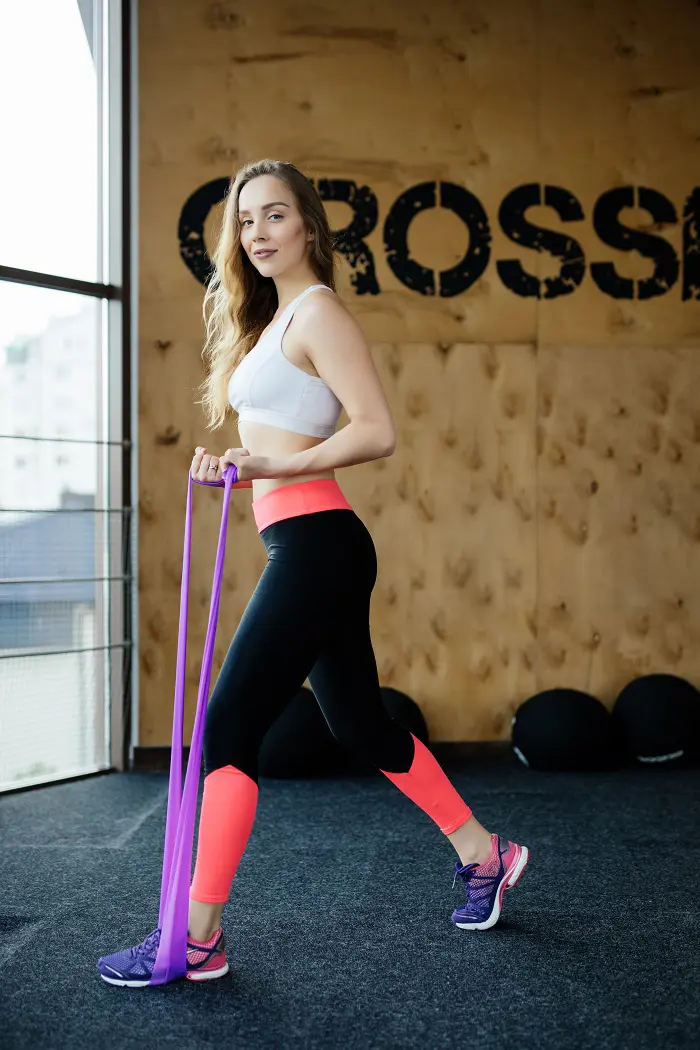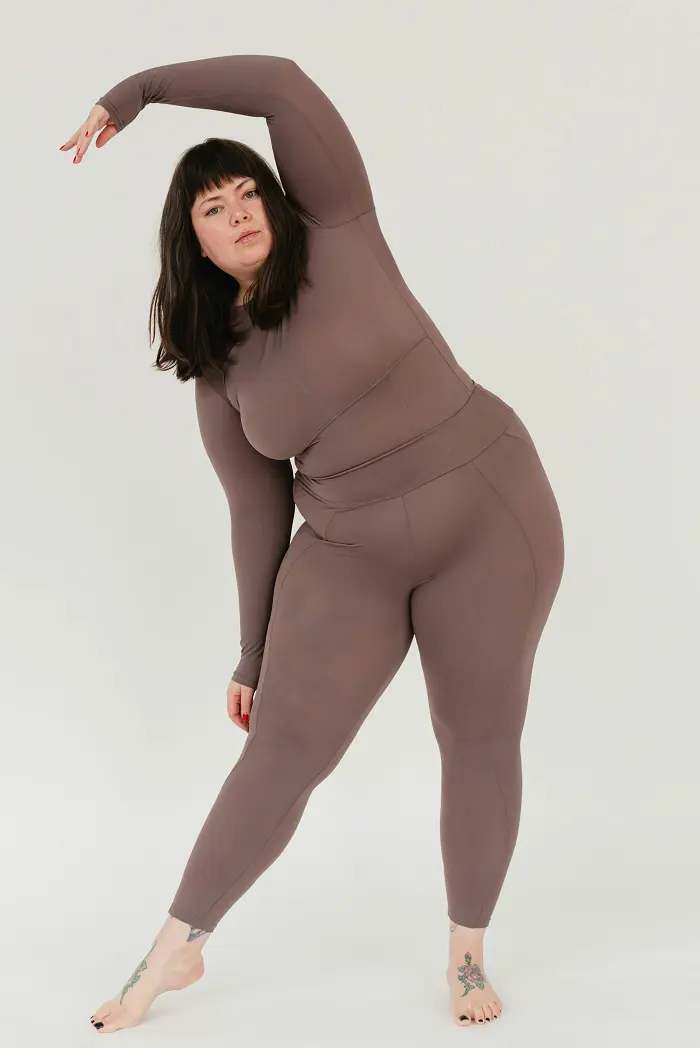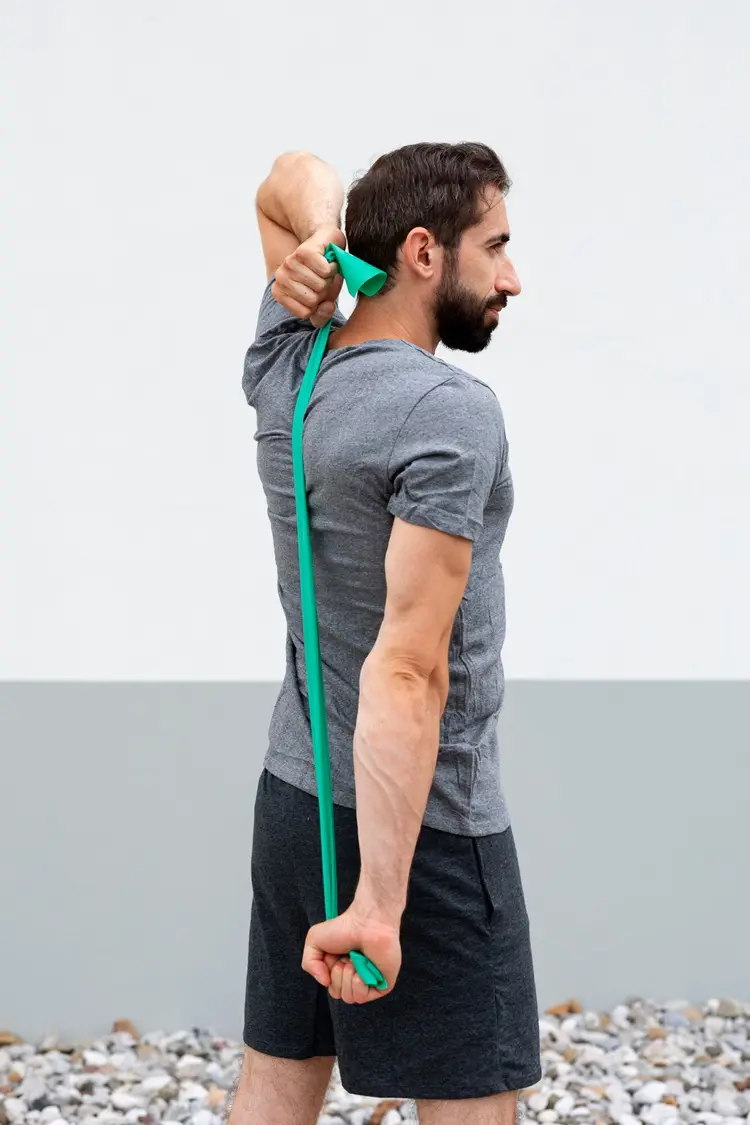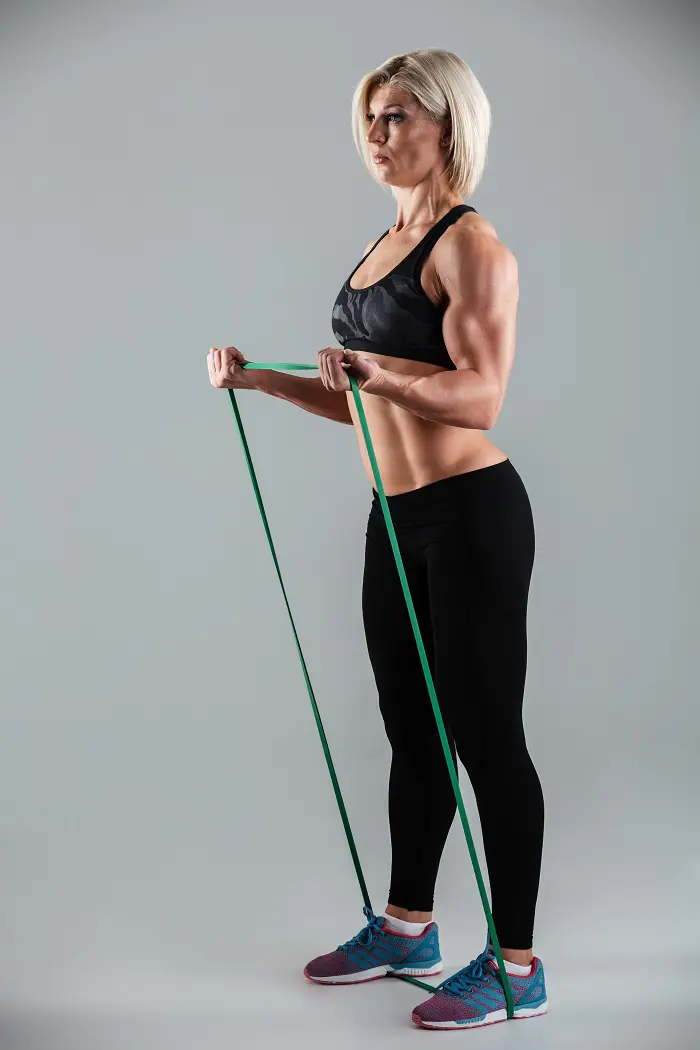10 Easy Patellar Tendonitis Exercises For Knee Pain Relief
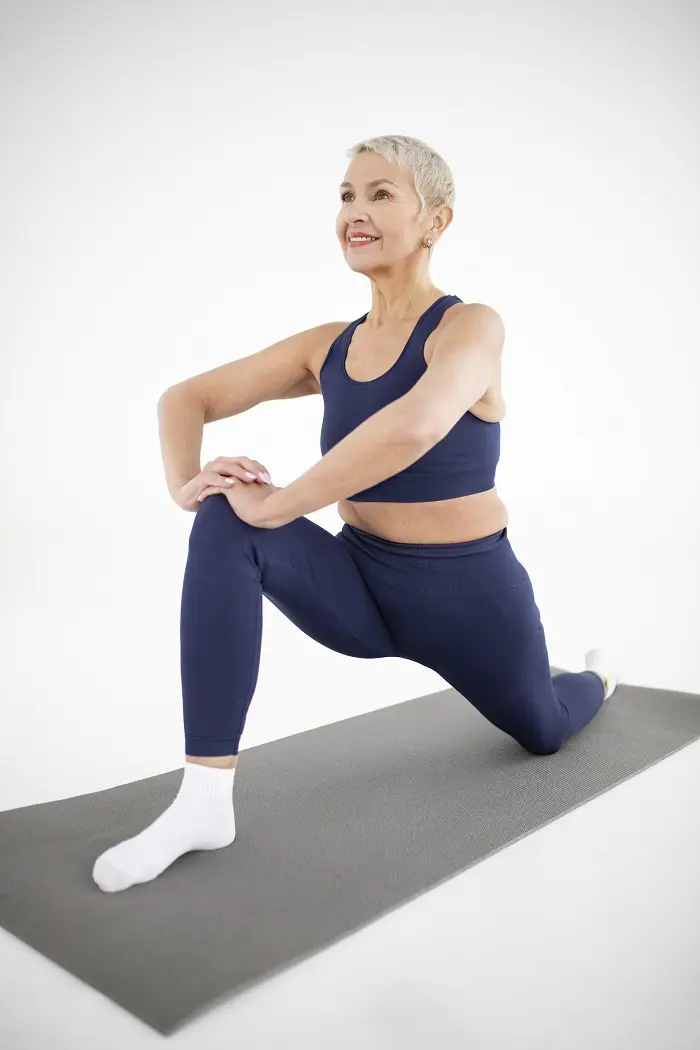
Inflammation in the patellar tendon can lead to a condition known as patellar tendonitis, which may interfere with our day-to-day activities. This tendon works with the quad muscles to extend the knee for running and jumping.
Also called Jumper’s Knee, this condition can be eased with regular exercises targeting the affected patellar tendon. So, let’s look at the 10 easy patellar tendonitis exercises to provide pain relief and rebuild our knee strength.
1. Straight Leg Raises
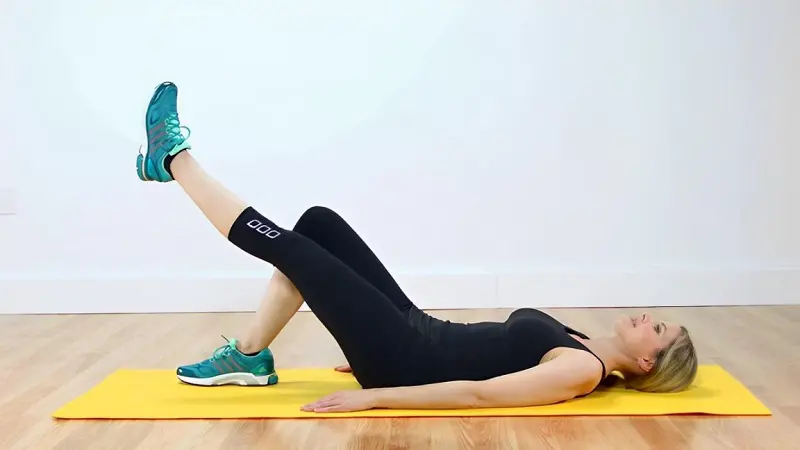
This is one of the simplest (yet effective) patellar tendonitis workouts that you can try at home. It just requires you to lie down flat on the ground and raise the leg with smooth momentum.
This easy workout is known to strengthen the quad muscles and improve the range of motion, making it a great leg mobility exercise as well.
Steps To Do It:
- Roll down a comfortable mat and lie down on it, flat on your back.
- The arms must be present at your sides. The legs must be initially fully extended.
- Now, bend the right knee while still keeping the left leg straight.
- Start lifting the left leg slowly, stretching the quad muscles deeply.
- Gently lower the leg to the original position, feeling a good stretch as you go down.
- Raise the right leg next while bending the left knee.
- Repeat this movement, alternating sides, for 10 reps per leg.
2. Short Arc Quad
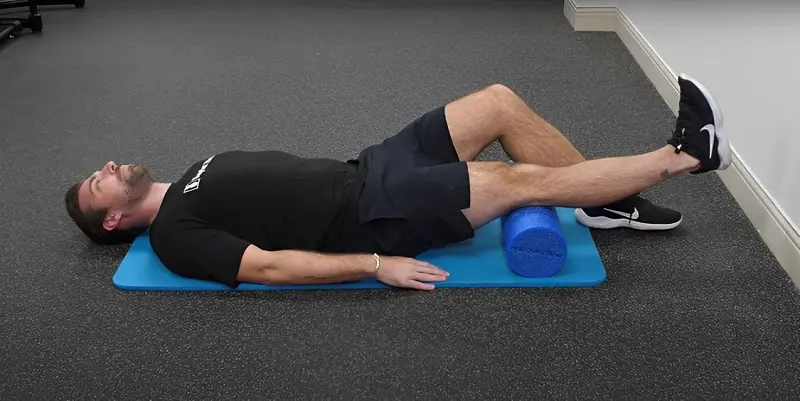
Foam rollers can be great equipment for relieving knee pain during patella tendonitis. When the muscles around the knee are rolled over it, it can offer a pleasant stretch, soothing the affected part effectively.
Conduct this exercise regularly if you have a foam roller in your home. Consistent practice means faster recovery and significant improvement of the quadriceps.
Steps To Do It:
- Begin the workout by lying on a floor or bed. The arms must be located at your sides.
- Put the foam roller under the knees. The heels should nearly touch the floor.
- Gently raise the affected knee toward the ceiling. Lift the leg until it becomes straight.
- Hold this lifted leg for a few seconds before lowering it.
- Practice doing this exercise for 8 to 12 reps.
- If both knees are affected, then you can conduct the leg lifts alternatively.
3. Step Ups
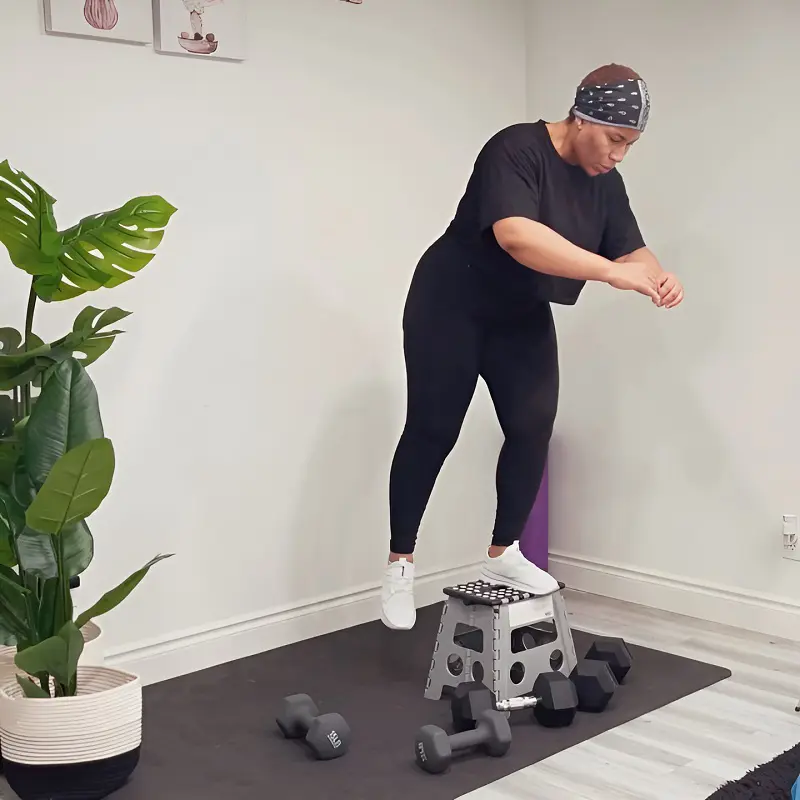
Step ups are another workout you must do alongside straight leg raises and short arc quads to get a deep stretch in the quad muscles and soothe the discomfort caused by patellar tendonitis.
It is essential to have a raised platform to do this exercise, such as a plyo box or a step platform. If you’re up for some challenge, increase the height of the elevated platform.
Steps To Do It:
- Stand in an upright posture with an elevated platform in front of you.
- Keep your hands at your sides and feet planted firmly on the floor.
- Now, raise the right leg through bending the knee.
- Place the raised leg on the elevated platform and lift yourself up.
- The left leg should hover slightly behind and close to your right leg.
- Stay in this pose for 10 to 20 seconds.
- Then, return to the starting position by landing on your back leg.
- Continue doing this exercise for 7 to 10 reps, then switch the legs.
- You may also utilize the support of a chair or wall if you find balancing on one leg tricky.
4. Wall Sits
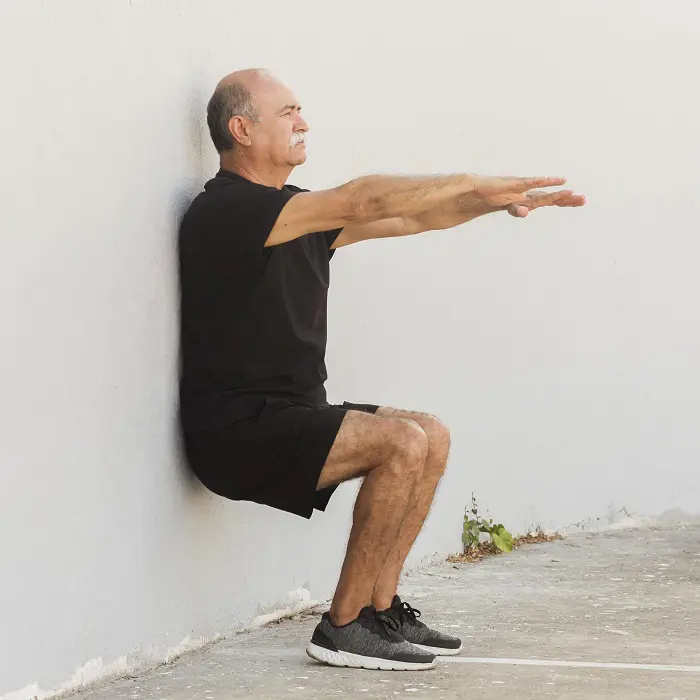
Do you want to build endurance and core strength along with relieving pain in the knee and quads? Wall sits are an extremely effective workout that does just that. It can be done anywhere - at home, office, or gym.
It totally feels like sitting in a chair, but an invisible one! One thing to note: avoid holding this position for too long if you’re dealing with severe inflammation.
Steps To Do It:
- Stand with your back facing against a wall. Keep the feet at shoulder width distance.
- Lean the entire upper body against the wall, from the head to lower back.
- Take a deep breath, and start sliding down the wall. Bend the knees as you perform this process.
- Get down as if you are trying to sit on a chair, keeping the arms straight ahead.
- Once the thighs become parallel to the floor, stop the descent.
- Hold this “sitting in a chair” like pose for a few seconds.
- By pressing the heels, raise yourself back up slowly and steadily.
- Perform this move for 10 reps to get a quality patella tendonitis exercise.
5. Clamshells
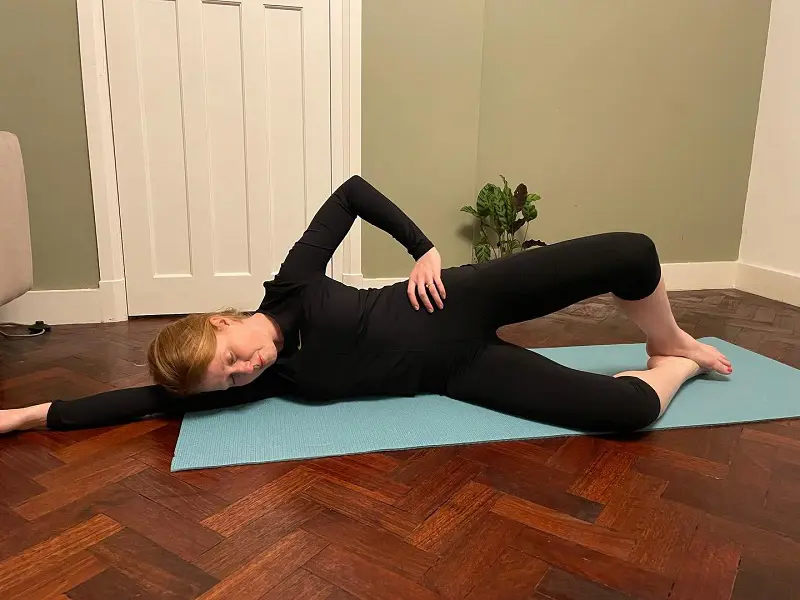
Clamshells are fantastic for stretching the knees and strengthening the quad muscles. The name comes from the way the movement resembles a clam shell opening.
In addition to targeting the quadriceps, this exercise also benefits the hips and is a great option for anyone looking for some quality gluteus medius exercise.
Steps To Do It:
- Lie down on the floor, facing your left side. The legs must be bent at 45-degree angle.
- Keep the legs stacked on top of one another.
- Raise your head slightly, supporting them with one hand. Or, you may also raise your head on a pillow.
- Now, gently lift the bent leg at the top without moving the bottom one.
- Raise the leg as high as you can. Once at the top, it will look like the opening of a clam shell.
- Hold at the top for 5 to 10 seconds, then lower the raised leg.
- This movement should be practiced for desired number of reps.
- For an extra challenge, bind a resistance band around your bent knees.
6. Heel Slides
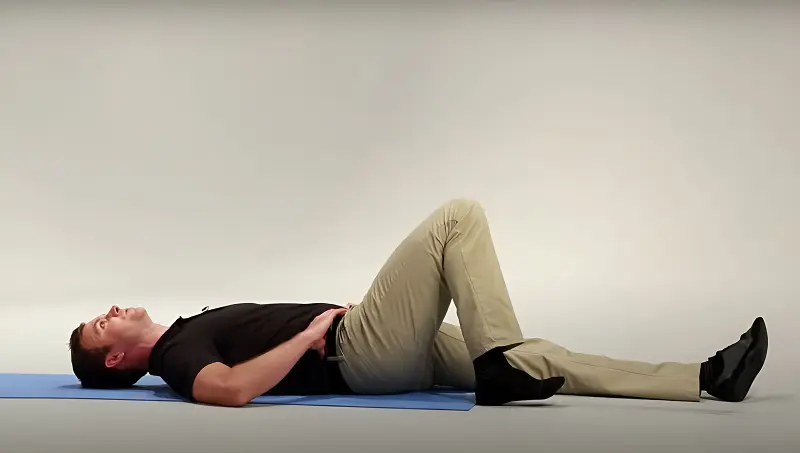
Improve your knee’s range of motion and decrease patellar tendonitis inflammation with the consistent practice of these simple heel slides. It is done in a supine position, i.e. lying on your back.
Do this exercise with the help of a towel to intensify the muscle stretch. However, avoid using them if there is severe pain in the knee or thighs.
Steps To Do It:
- Lie on the ground with the legs fully extended. The toes must be pointing toward the ceiling.
- Now, bend the right knee and place the right foot firmly on the ground.
- Start sliding the right heel towards your butt. Go further until you reach your maximum potential.
- Bring the bent knee back to the initial position.
- Raise the other knee and continue the same process.
- To stretch the lower body effectively, conduct heel slides for 7 to 10 reps.
7. Terminal Knee Extension
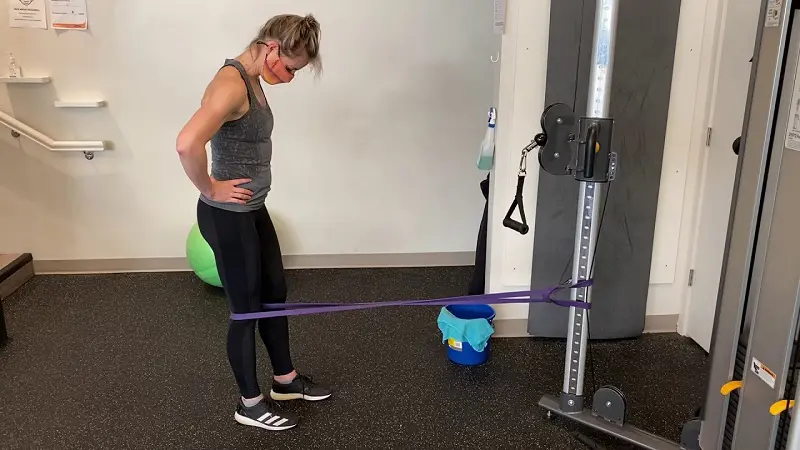
Among the top jumpers knee exercises, terminal knee extensions stand out as a fantastic option. This workout not only stretches the affected knee but also provides soothing relief. It’s also helpful for rebuilding lower-body mobility after a recent surgery.
To perform this exercise, you’ll need a resistance band. Remember, avoid locking your knees and steer clear of using forceful momentum during the movement.
Steps To Do It:
- Stand in front of a chair or table with a resistance band. Maintain a hip width distance between the feet.
- Loop one end of the resistance band around the table or chair leg. Tie the other end with your affected leg at the knee level.
- The band should be fully extended before starting the lifting motion.
- Now, raise the banded leg slightly forward through bending the knee.
- Only lift the heels; toes should remain on the ground.
- Continue doing this workout for 10 to 12 reps.
- For an additional challenge, maintain a wider feet gap before exercising.
8. Kneeling Hip Flexor Stretch
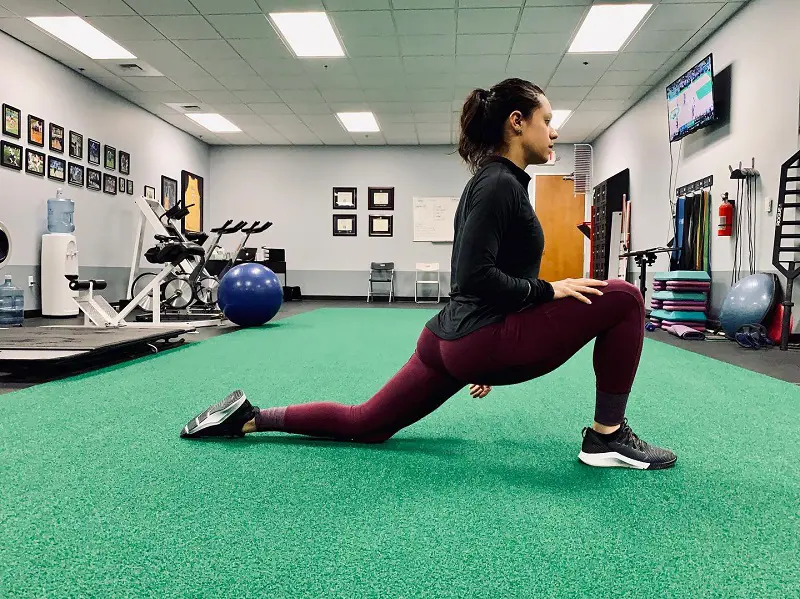
Doing the hip flexor stretch in a half-kneeling position will help engage your knee joints alongside the gluteal muscles. Avoid leaning too far into the stretch as it could result in muscle strain or other unnecessary lower back problems.
Steps To Do It:
- Knee down on one leg, while the other leg must be in front of you with a perpendicular bent knee.
- Place your hands in a relaxed manner near the bent knee.
- Tuck the pelvis slightly under and begin leaning forward. The knees will bend further to get a deep stretch in the joints.
- Pause at the top of the movement for 30 seconds. Then, slowly bring the body to the original pose.
- This exercise must be done for 10 to 12 reps. Remember to perform equal reps for each leg.
9. Half Squat

Half squat is a less stressful variation of traditional squatting. It's fantastic for individuals dealing with patellar tendonitis as it targets quad muscles without putting much strain on knees.
Remember to avoid craning your neck upwards since it could lead to neck strain. Also, keep the knees aligned with your toes throughout the movement for proper form and safety.
Steps To Do It:
- Begin in standing pose with your feet shoulder width apart.
- Keep the back straight, core engaged, and chest puffed out as you drive the hips into a hip hinge.
- Slowly lower the hips while squeezing glutes.
- Descend until your thighs are at 45-degree angle to the floor.
- Hold the half-squat pose for 30 seconds, then push through your heels to return to the starting position.
- Avoid shifting your shins or toes inward or outward, as this can cause unnecessary strain.
- Repeat this process for desired number of reps.
10. Stationary Cycling

Do you want to strengthen the muscles around your knee through cycling but lack a bike or prefer staying indoors? Stationary cycling is a great alternative for this matter. To do this, head to your local gym and hop on cycling machine.
When done in a slow and controlled motion, this exercise can help improve patellar tendonitis and ease any discomfort. However, fast or jerky movements might worsen the inflammation in your tendons, so take it easy!
Steps To Do It:
- To start this exercise, get seated on a stationary bike. Ensure that the seat is comfortable and allows for a little knee flexion.
- Keep the hands on the handles and start pedaling with controlled movements.
- Continue pedaling at slow speed for 5 to 10 minutes. If you're up for some challenge, try increasing the pace.
- When you approach the cycling session's end, gradually decrease your speed before coming to a complete halt.
- Take short rest, then hop back on the machine to add another 5 minutes to your workout.
Safety Tips And Precautions
Any person with jumper's knee should be extra cautious while practicing knee stretches. Overstretching the muscles during this time can worsen the condition.
Here are some safety tips to ensure an effective and safe workout session:
1. Understand The Correct Form
One of the major successful elements for doing knee tendonitis exercises safely is to understand the workout’s correct form and movements. Without knowledge in these matters, we would only be wasting our time and effort.
Doing workouts without proper technique can put unnecessary stress on our knees and quadriceps, which defeats the purpose of why we’re doing them in the first place.
2. Wear Knee Supports
During patellar tendinopathy, our knee/s are affected with constant pain and discomfort. Even a small mistake can become disastrous for the lower body’s well-being. One method to remain safe and secure while doing the aforementioned exercises is to wear a knee support item like a brace or pad.
Choosing the right knee braces can help stabilize the joints, speed up the muscle recovery process, and increase the range of motion as well. Ultimately, it aids to hold the knee in place.
3. Incorporate Warm Up Routine
Do not jump right into performing the aforementioned exercises. Before starting, it’s crucial for warm ups to loosen tight muscles, raise body temperature, and boost blood flow.
Better blood circulation aids to deliver more oxygen and nutrients to our brain and muscles, which ultimately aids in muscle recovery. In short, warming up can enhance our performance and make our workout session much more effective.
Causes Of Patellar Tendonitis
1. Physical Activities
Strenuous physical activities like jumping and running may lead to the development of patellar tendonitis. Repeatedly performing these activities in daily life can accumulate stress in patellar tendon and ultimately lead to inflammation.
Athletes, who participate in sports like basketball and volleyball, can face this issue more than the average people.
2. Muscle Imbalance
There may be cases where one side of the leg muscle is stronger than the other. This can lead to the stronger side pulling harder on the patellar tendons, creating an uneven pull situation. This only fastens the development of patellar tendonitis.
3. Presence Of Chronic Diseases
Some chronic diseases like rheumatoid arthritis and diabetes can make the patellar tendons weaker. A weak tendon is automatically more prone to developing tendonitis.
Disclaimer: The content presented in this article is only intended to be used for information purposes. It should not be taken as a form of medical / clinical advice.
Recent posts
Exercises
Exercises
10 Trapezius Stretches To Relieve Muscle Stiffness
Responsible for rotating the scapula, the trapezius muscles are triangular in shape and located in the upper back. They also play a role in extending the neck and contribute to arm stability. Since this muscle does a lot of work, it can become stiff ...
Exercises
20 Different Variations Of Push Up For Beginner To Experts
Pushups are commonly practiced for building upper body strength - and for good reason. They could also be the very first workout we ever tried. No expensive equipment is needed, and it can be done from the comfort of our home. If we are getting bored...
Exercises
20 Squat Variations For Every Fitness Level
Squats have been a popular exercise for many fitness enthusiasts. They are effective for strengthening key lower-body muscles like the glutes, hamstrings, quadriceps, and calves. Practicing them daily can lead to a toned butt - an aesthetic goal for ...
Exercises
12 Golfers Elbow Exercises For Quick Pain Relief
Golfer’s elbow, aka medial epicondylitis, happens when the tendons connecting your forearm muscles to the bony inside part of your elbow get inflamed. This can cause pain and throw off your physical well-being. To tackle this, there are plenty ...
Exercises
11 Exercises To Gain Weight For Bulking Up At Home
Bulking up at home is possible with the correct exercises and a well-structured diet. You do not need any fancy equipment or a complex setup to perform these workouts. Focusing on compound movements and gradually increasing intensity will maximize yo...
Exercises
12 Serratus Anterior Exercises For Better Shoulder Health
The serratus anterior, aka the boxer muscles, plays a key role in shoulder stability and range of motion. Strengthening this muscle not only enhances mobility but also helps prevent injuries and improve posture. Including targeted workouts in your fi...

